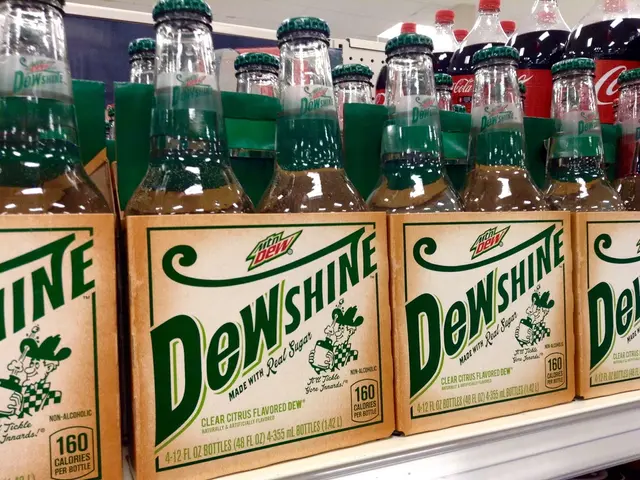Differentiating age spots from skin cancer: A guide for recognizing signs and symptoms
Let's Shed Light on Age Spots, Skin Cancer, and Actinic Keratosis: A Comprehensive Guide
Diving right into it:
Aging gracefully doesn't always mean a flawless complexion. Age spots, skin cancer, and actinic keratosis can make an appearance as you age, particularly on sun-exposed areas. Don't panic! Knowledge is power, and understanding the differences between these conditions is essential to stay on top of your skin health.
So, what's the deal with age spots?
These are harmless, flat or slightly raised dark patches on your skin, most commonly appearing as brown or black spots. They may resemble freckles and are typically round with clear borders. Age spots are usually found on areas like your face, hands, and chest that have had plenty of sun exposure[1].
But, what about skin cancer?
Skin cancer is a big deal. It can appear in various forms, but two common types are basal cell and squamous cell carcinoma.
- Basal Cell Carcinoma: This type usually appears as a firm, shiny, pearly bump or a flat, reddish area[2].
- Squamous Cell Carcinoma: Typically presents as a firm, red nodule or a flat, red lesion that may be crusty or scaly[2].
And then there's actinic keratosis.
Actinic keratosis, also known as solar keratosis, are pre-cancerous growths. They're characterized by small, crusty, or scaly bumps that are rough to the touch and may be skin-toned, red, pink, brown, tan, or yellowish in color[3][4].
So, what should I look out for?
Age spots are usually asymptomatic, but occasional itching or bleeding may occur if irritated[1].
Skin cancer, on the other hand, can present itself in various ways depending on the type:- Basal cell carcinoma often appears as a non-healing sore or bump that doesn't go away.- Squamous cell carcinoma may appear as a persistent sore or red area that doesn't heal[2].
Actinic keratosis, however, may cause discomfort like stinging, itching, or sensitivity to touch[3][5].
When should I speak to a doctor?
Pay attention to any unusual changes in your skin and don't hesitate to speak with a healthcare professional about your concerns. It's crucial to catch skin cancer early for easier treatment. Seek medical advice if you notice:- Age Spots: Persistent irritation, bleeding, or rapid growth.- Skin Cancer: Any non-healing sores, changing color, shape, or size.- Actinic Keratosis: Persistent discomfort, growth, or rapid multiplication[3][5].
And what about treatments?
Age spots are usually benign and don't require treatment unless for cosmetic reasons. Options include freezing, scraping, or laser removal[1].
Skin cancer treatment depends on the type and stage, but common methods include surgical excision, radiation, chemotherapy, or topical treatments[2].
Actinic keratosis may be treated with topical creams, cryotherapy, photodynamic therapy, or surgical removal. Regular check-ups and early treatment can help prevent progression to squamous cell carcinoma[3][5].
Bottom line:
Armed with this knowledge, you can take control of your skin's appearance and health. Remember, prevention is key, so always use sun protection and perform regular skin checks. If in doubt, consult a healthcare professional.
- Salzmann, J. M., Gosain, A., & Pandya, A. G. (2016). Photodamage: The Aging Face. The Journal of clinical and aesthetic dermatology, 9(3), 13–20.
- American Cancer Society. (2021). Skin Cancer. Retrieved on January 28, 2023, from https://www.cancer.org/cancer/skin-cancer.html
- Al-Omar A, Al-Shamsi S, Al-Tubaid A, Al-Sharif A. Epidemiological, Clinical and Histopathological Features of Actinic Keratosis in Oman. International Journal of Infectious Diseases and Medical Microbiology. 2012;5(1):31–36.
- Feng, Y. L., & Wollner, N. A. (2019). Actinic keratosis. StatPearls [Internet]. Retrieved on January 28, 2023, from https://www.ncbi.nlm.nih.gov/books/NBK534417/
- American Academy of Dermatology. Actinic Keratosis. Retrieved on January 28, 2023, from https://www.aad.org/public/diseases/skin-cancer/actinic-keratosis
- In the realm of dermatology, seniors might encounter age spots, other skin conditions, and even skin cancer, particularly on sun-exposed areas.
- Skin cancer, a serious medical-condition, can appear in various forms like basal cell carcinoma and squamous cell carcinoma, both of which require attention if found.
- Actinic keratosis, a pre-cancerous growth, is another skin condition that seniors should be aware of, as it can progress to squamous cell carcinoma if not treated early.
- Health-and-wellness, including skin-care and skin-conditions, is an essential part of life for seniors, and regular checks can help catch any abnormalities at an early stage.
- Medical-professionals can provide science-based treatments for age spots, skin cancer, and actinic keratosis, ensuring the best possible outcomes for overall health and wellness.








